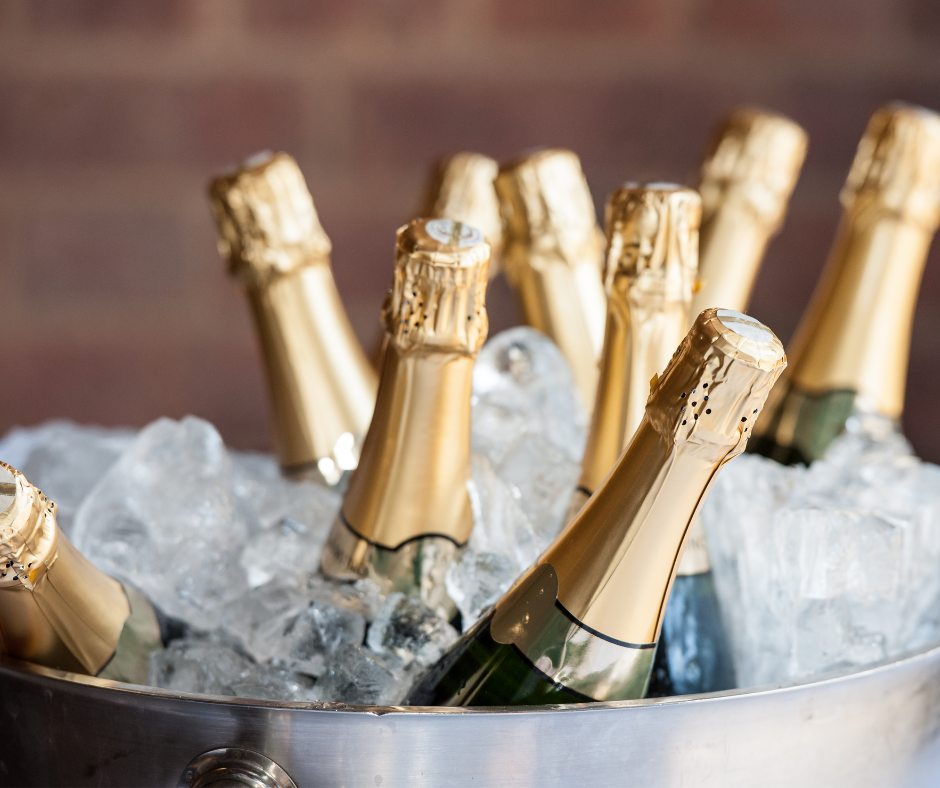All those Bubbles!
I love Champagne. And I like sparkling wine. But have you ever wondered how the winemaker gets all those bubbles into a champagne bottle? Do they pump them in? Do they occur naturally? As I look at my lovely flute of sparkling wine with that single stream of bubbles floating to the top, I can’t help but wonder.
Most of us know that Champagne comes from a specific region in France. This region has been making sparkling wine since the 17th Century! The traditional method that is used in Champagne is replicated in many quality champagne houses. This method is also used by winemakers in the United States. It is a longer process and requires significant attention to detail.
Where do all those bubble come from?
Without getting too scientific here, the traditional method of making champagne involves a secondary fermentation that happens in the bottle. The wine is pressed and fermented into a still wine. During bottling, a mixture of yeast and sugar are added to the wine. This mixture causes the “secondary fermentation” in the bottle which gives us those fun bubbles in the wine.
The Charmat method is used for Cava, Prosecco and other lightly sparkling wines such as Lambrusco. For this method, the wine undergoes secondary fermentation in large, stainless-steel tanks and it is then bottled. Other methods do include large vat fermentation in which carbon dioxide is pumped into the tanks then the wine is then bottled. It doesn’t go through secondary fermentation at all. This is used in lesser quality and mass production sparkling wines. This method is outlawed in some regions.
The tradition method of making champagne is labor intensive and requires precision from the wine maker. Champagne traditionally does not have a vintage as the winemaker blends the base wine as well as the dosage to ensure the end product tastes the same from year to year. The wine ages on “its lees,” which are the yeast cells, and they must be removed from the bottle before the wine goes to the shelves. These tasks require much more attention to detail which also leads to a higher price for these wines.
What causes the pop?
Of course, we can’t have a bottle of the bubble without the production of removing the cork. That infamous “pop” when the cork comes off is music to my ears! But how do you keep the wine from spilling over? I’ll share my secret with you. Don’t try to pop it off with your thumbs, that sends the cork flying and someone might get hurt. You should twist the work off like it is a screw cap. Another little secret is to give the wine plenty of time to chill. Rapid chilling of sparkling wine will send those bubbles right out of the bottle when the cork pops. You can saber the bottle if you are into big productions, but I have not mastered that one. And I much prefer to drink my Champagne without the chance of broken glass in the bottle.
There is no doubt sparkling wine is fun and is typically the symbol of a celebration. Go ahead and pop that bottle for no reason. Whatever your favorite type of sparkling is, enjoy it because, well, why not?
Cheers! Alayna
Alayna is an advanced level Sommelier and Owner of Southern Vibes Tasting Room and Wine Cellar located in the Markets at Murbella. Stop in for wine and tapas and shop their wine inventory.


